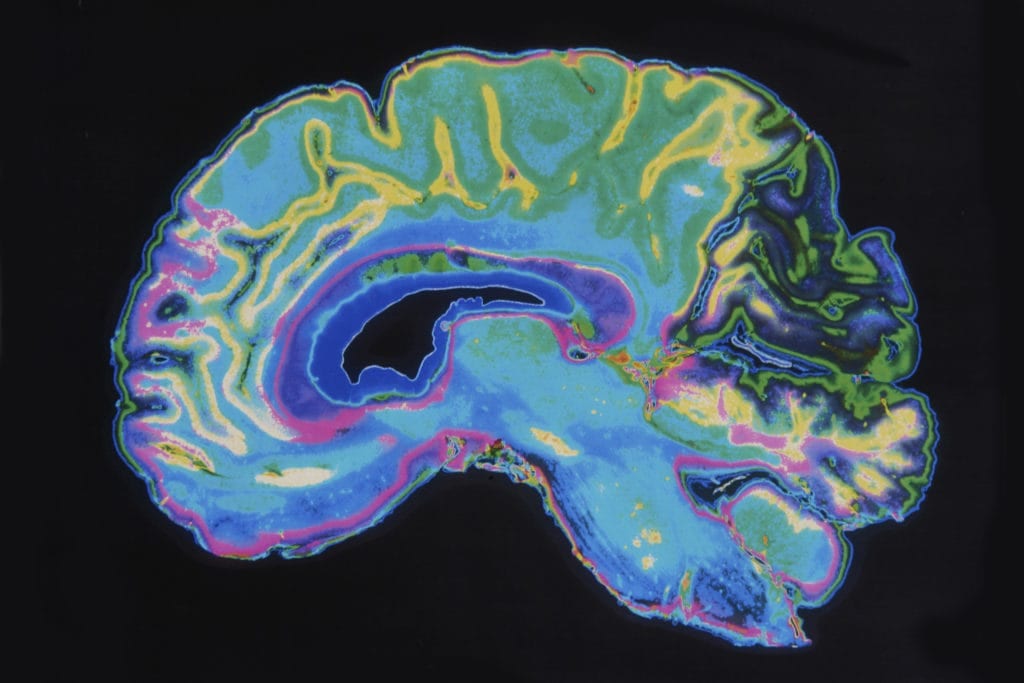Frontotemporal neurocognitive disorder is a mental health condition characterized by abnormal shrinkage in two parts of the brain, called the frontal and temporal anterior lobes. This condition replaces an essentially equivalent illness, known as frontotemporal dementia, in the newly released fifth edition of the mental health reference text called the “Diagnostic and Statistical Manual of Mental Disorders.” Some people affected by frontotemporal neurocognitive disorder develop relatively mild impairments in their ability to exercise conscious brain functions; however, other people with the disorder develop major impairments that reduce or eliminate their ability to lead independent lives.
Background Information
An organization called the American Psychiatric Association (APA) produces the Diagnostic and Statistical Manual as an everyday resource for doctors who must diagnose various forms of mental dysfunction in their patients. Over time, the manual (known far and wide as the DSM) has gained a footing as the single most used and respected mental illness guidebook in the United States, and its definitions set the tone for mental health discussions both inside and outside the community of practicing professionals. During the process that led to the release of the fifth edition of the Diagnostic and Statistical Manual (DSM 5), the APA decided to eliminate the use of the term “dementia” from its definitions for a number of mental disorders. This move was made partially in response to the experiences of practicing physicians, who found that older people diagnosed with dementia often reacted negatively to the social stigma of such a diagnosis, in addition to the diagnosis itself. It was also made because doctors often found that younger adults diagnosed with dementia associated the condition with elderly people, and therefore didn’t take their symptoms as seriously as medical circumstances warranted. As part of the change in basic terminology, DSM 5 includes a definition for frontotemporal neurocognitive disorder instead of a definition for frontotemporal dementia.
Frontotemporal Neurocognitive Disorder Basics
The brain’s frontal and temporal lobes play a primary role in maintaining aspects of brain function such as the ability to use language, the ability to regulate behavior, and the ability to control the things that we collectively refer to as a “personality.” People with frontotemporal neurocognitive disorder have any one of several problems that lead to shrinking in these vital brain areas. The specific manifestation of the disorder depends upon the particular portions of the frontal and temporal lobes that undergo shrinkage, as well as the degree of shrinkage that occurs at any given point in time. The Mayo Clinic lists potential behavior-related symptoms of frontotemporal neurocognitive disorder (frontotemporal dementia) that include loss of the normal ability to make appropriate decisions or control impulsive urges, a corresponding increase in poor decision-making or impulsive behavior, loss of the ability to empathize with others or develop personal motivation, and changes in grooming or eating habits. Language- or speaking-related difficulties associated with the disorder include aphasia (loss of the ability to use or understand words) and a more narrowly defined loss of the ability to use words that make sense for a given conversational context. In relatively rare circumstances, people with frontotemporal neurocognitive disorder also develop difficulties with normal body movement such as rigid or trembling muscles, loss of the ability to coordinate the activity of different muscles, unusually weak muscles, or swallowing problems.
Mild and Major Forms
Some individuals with frontotemporal problems develop a condition called mild frontotemporal neurocognitive disorder, while others develop a condition called major frontotemporal neurocognitive disorder. People with mild frontotemporal problems experience relatively modest changes in their ability to exercise their conscious mental functions, and retain the ability to function well enough to live on their own without serious difficulty. Still, when compared to individuals with normal frontal and temporal lobes, they clearly have signs and symptoms of brain dysfunction. People with major frontotemporal problems experience much more drastic changes in their ability use their conscious mental functions, and subsequently partially or completely lose their ability to function independently in everyday life. Doctors use standard testing procedures to distinguish between mild and major frontotemporal impairments. People with mild impairments receive scores on these tests that are clearly worse than the scores obtained by people with fully functional frontal and temporal lobes. In turn, people with major impairments receive standard testing scores that are at least an order of magnitude worse than the scores obtained by people with mild frontotemporal problems.
Treatment Considerations
Frontotemporal neurocognitive disorder is both incurable and progressive, which means it inevitably gets worse over time. Doctors can potentially manage the effects of frontotemporal dysfunction through the use of medications called SSRIs or other types of antidepressants, or through the use of medications normally used to treat the symptoms of a mental state called psychosis. Affected individuals with speech or language problems may also benefit from therapies specifically designed to address those symptoms.

